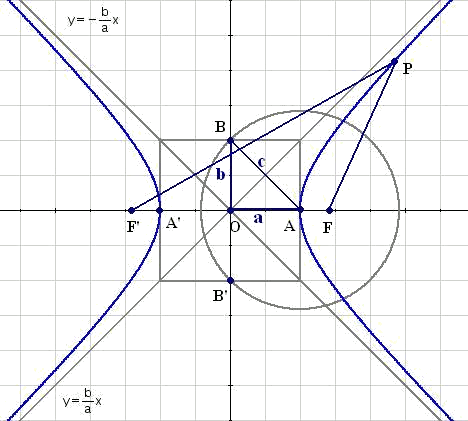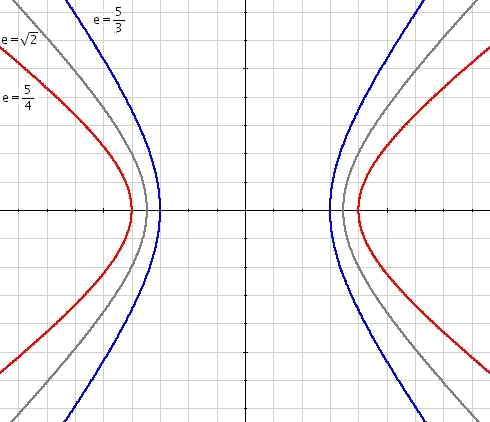A hyperbola is the curve formed by the set of points of the plane, for which the difference of distances to two fixed points, the foci, is constant:
- Foci: There are two fixed points
- Focal axis: It is the axis created by the straight line
- Focal or real distance: It is the distance of the segment
- Secondary or imaginary axis: Axis formed by the set of equidistant points of
- Center: It is the average point of the segment
- Symmetry axes: Both the focal axis and the secondary axis are symmetry axes.
- Apexes: The apexes
- The apexes
- For symmetry they are found with the center circle
- Major axis: It is the axis created by the segment
- Less axis: It is the axis created by the segment
- Relation between semiaxes:
- Radioes vectors: The segments
- Asymptotes: A hyperbola has two asymptotes of respective equations

Eccentricity
The eccentricity gives us information about the gap in the branches of the hyperbola.
The eccentricity is identified then
In the extreme case

